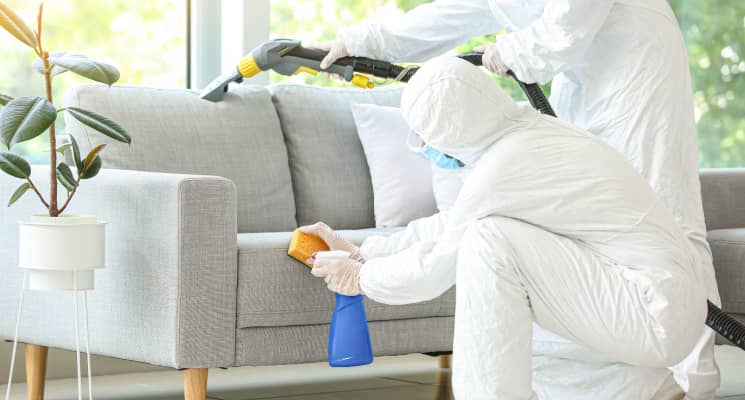Which Pest Control Technique Uses Physical Methods Effectively?
Share
Pest control is a crucial aspect of maintaining a healthy environment, whether in your home or on a larger scale. Among various methods available, one stands out for its **safety** and **effectiveness**: physical pest control. But **which pest control technique uses physical methods**? In this article, we'll delve deep into the realm of physical pest control, its techniques, and how they can serve as an environmentally friendly alternative to chemical methods.
Physical pest control techniques encompass a variety of methods aimed at reducing pest populations without employing toxic substances. These methods appeal to many individuals who are conscious of their health and the environment, making them a highly viable option.

Understanding Physical Pest Control Techniques
Physical pest control involves the direct management of pests through non-chemical means. These methods can be incredibly beneficial, particularly when dealing with common household pests. Here are some primary methods of physical pest control:
1. Traps
Traps are perhaps the most recognizable form of **physical pest control**. They are designed to catch or kill pests without using harmful chemicals. Traps can be effective for a variety of pests, including mice, rats, and insects. The most common types of traps include:
- Glue Traps: These sticky boards can trap small insects and larger pests alike.
- Snap Traps: Often used for rodents, these traps quickly kill the animal upon activation.
- Cage Traps: These traps catch animals alive, allowing for relocation instead of extermination.
2. Barriers and Exclusion Methods
Creating barriers is another **physical method** for pest control. These can include:
- Sealing entry points: Cracks and openings in walls, foundations, and windows can be sealed to keep pests out.
- Installing screens: Fine mesh screens on windows and vents can prevent insects from entering.
- Using fences: For outdoor spaces, fencing can keep out larger animals like rabbits or deer.
3. Natural Predators
Introducing natural predators into your garden can effectively control pest populations. For instance, ladybugs eat aphids, and birds can reduce insect numbers significantly. This technique promotes balance within the ecosystem.
4. Temperature Control
Extreme temperature methods, such as using heat treatment or cold exposure, can eliminate pests. Heating an area can kill bedbugs, while freezing can be effective for certain insects. These methods are often used in conjunction with other pest control strategies.

The Benefits of Physical Pest Control
Why consider physical pest control methods over chemical ones? Here are the key benefits:
- Environmentally Friendly: Physical methods reduce the use of harmful chemicals, making them safer for your family and pets.
- Targeted Approach: They primarily address specific pest problems, minimizing harm to non-target species.
- Cost-Effective: Many physical pest control methods involve low-cost materials such as traps and barriers.
- Long-Term Solutions: Some methods, like exclusion, create lasting solutions that keep pests out for good.

Limitations of Physical Pest Control
While physical pest control methods have significant advantages, they come with certain limitations:
- Effectiveness Varies: Some methods work better on certain types of pests than others.
- Labor-Intensive: Physical pest control often requires regular monitoring and maintenance.
- Not Always Immediate: Results may take time to manifest, unlike chemical treatments that can work quickly.

When to Seek Professional Pest Control Services
While many homeowners can manage pest issues themselves, sometimes a **professional pest control service** is necessary. If you encounter severe infestations or if physical methods dont yield results, consulting with experts is crucial. The Environmental Protection Agency provides tips on selecting an appropriate service, which can be found here.
FAQs About Physical Pest Control
-
What pests can I control with physical methods?
You can manage a wide range of pests, including rodents, insects, and larger animals, using physical methods.
-
Are physical pest control methods safe?
Yes, physical methods are generally considered safe because they avoid toxic substances.
-
How often should I check traps?
Regularly checking traps is recommended, ideally daily, to ensure they're functioning effectively.
Conclusion
Using physical pest control techniques can be a highly effective, safe, and environmentally friendly approach to managing pest problems. As weve explored, methods such as traps, barriers, and natural predators can work wonders. If you wish to delve deeper into pest management, you can read more about various pest control methods for keeping your space protected from unwanted guests here.
Ultimately, understanding which pest control technique uses physical methods equips you with the knowledge needed to maintain a pest-free environment.
As an Amazon Associate, I earn from qualifying purchases.
